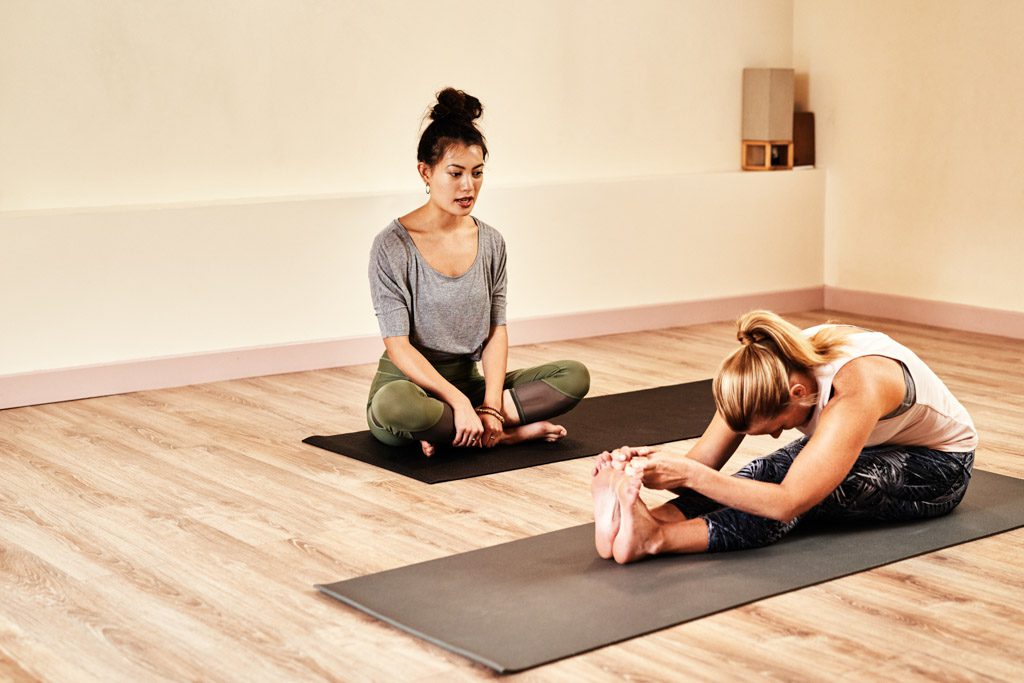Shannon Brasovan, Two-Brain Yoga Business Mentor
If you’re a yoga teacher or studio owner, you’ve likely encountered three major problems with your students:
1. The students attending your classes have a wide range of knowledge and abilities, making it difficult to teach them all effectively.
2. Your students have goals that go beyond the scope of a general yoga class.
3. You aren’t making enough money (or creating enough impact) for all the time you invest in group classes.
Group yoga classes are your discount offering. While that might seem backward in the yoga community, it’s the reality. Group classes offer scalability, not personalization or high levels of accountability.
Think about the client who always requires your “yoga whisper.” You know the person: You have to crawl across the room while leading a group vinyasa flow to assist this student with chaturanga almost every time. What if you could have 30 minutes one on one with that client? How different might their practice be—and their experience—if they weren’t gently called out in every class?
Plus, some students simply learn better one on one or in small groups.
In terms of yoga teaching, private yoga used to be the norm. Krishnamacharya, the father of modern yoga, studied privately with his teachers and taught students privately (including B.K.S. Iyengar and Pattabhi Jois). He believed that the techniques should evolve to meet the needs of the individual at the given moment and did not insist on one particular technique.
Over time, it has become the norm for yoga to be taught predominantly in group classes—but that doesn’t mean this is most effective. Group classes do not allow teachers to evolve the techniques to the each student’s needs. Instead, they must prescribe the same movements and techniques to everyone, regardless of goals, abilities and so forth.
Offering private yoga instruction is so important. So how do you start?
Step 1
Begin by setting aside five to 10 hours a week that you can devote to private yoga. Be realistic about initial time commitments. Start small and grow from there.
Step 2
Next, clearly define what problems you are equipped to solve one on one. Are you the best teacher for desk workers seeking better posture or early-rising Type A folks who need someone to hold them accountable to their practice three times a week? Clearly define whom you can serve and what problems you can solve so you don’t get caught teaching things you are not comfortable with or qualified for. Example: If someone wants to practice yoga with you to help with scoliosis, don’t take the client if you don’t know anything about scoliosis and yoga.
Step 3
Set a rate based on value, not what you think people can afford. What is an hour of your undivided time worth? What are you able to offer a student one on one that they can’t get in a group setting? A general starting rate is $65 an hour for newer teachers.
Step 4
Finally, call, text or email five clients you know could benefit from one-on-one teaching. Start with the problem they are trying to solve and share how private instruction can help them solve it. Don’t forget to come in with a “help first” mentality. How are you going to help them achieve their goals or overcome their obstacles? It’s not about you just selling them an hour of private instruction but about helping them move to the next level of their practice!
Click here for more about mentorship for yoga business owners.

